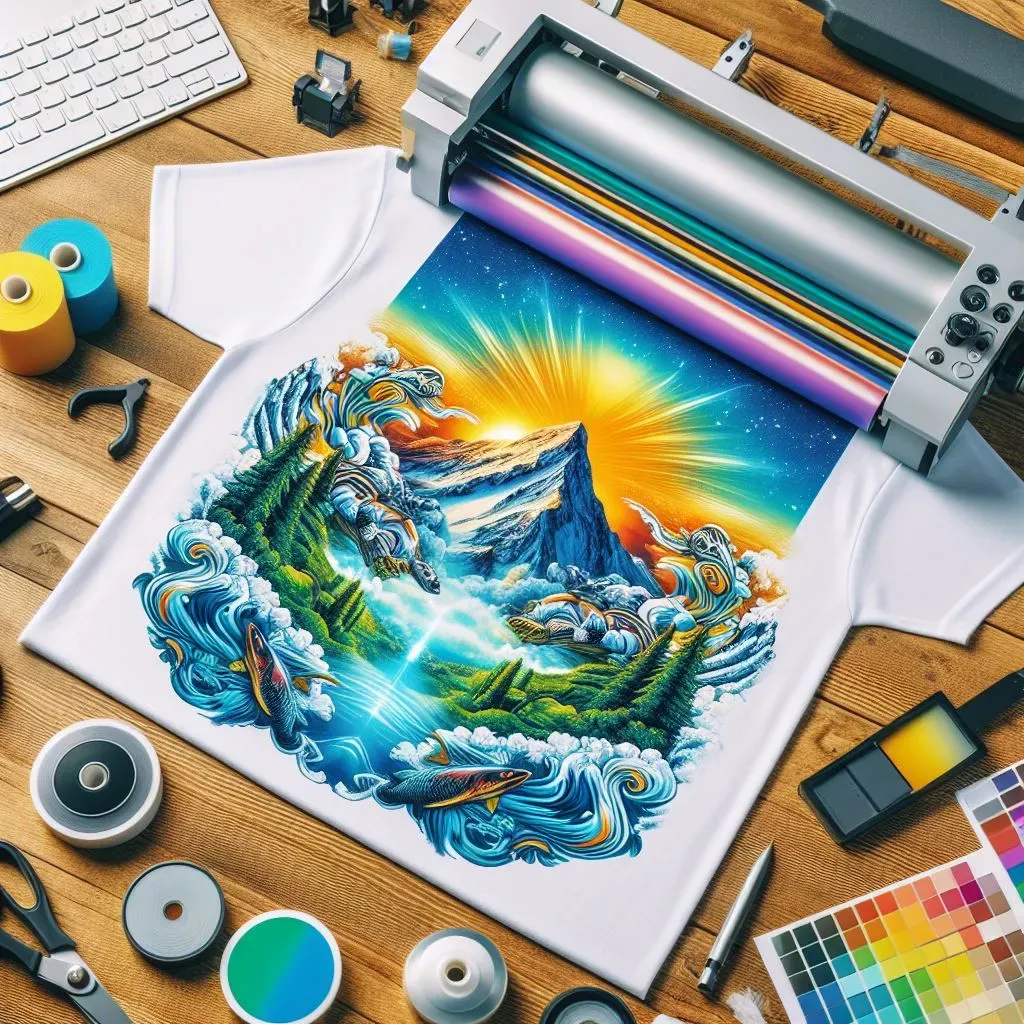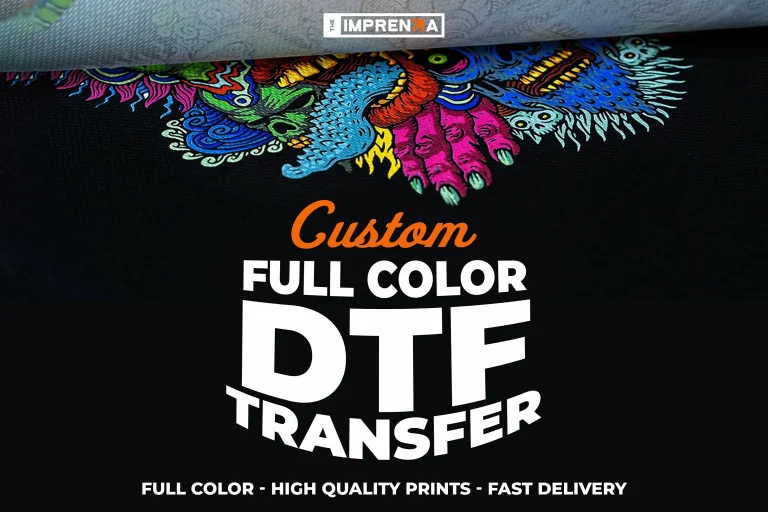Common Mistakes in DTF Transfers: How to Avoid Them
When delving into the world of Direct-to-Film (DTF) transfers, many newcomers quickly become aware of several **common mistakes in DTF transfers** that can hinder their projects. Understanding these pitfalls is crucial for anyone who wants to produce high-quality prints efficiently. From improper printer calibration to inadequate pre-treatment techniques, the potential errors are numerous, but so are the solutions. By taking the time to learn about **DTF transfer mistakes**, you can significantly improve your results and avoid costly mishaps. In this article, we will not only highlight essential **DTF printing tips** but also provide practical strategies for avoiding DTF errors, ensuring a smooth and successful printing experience.
In the realm of garment printing, Direct-to-Film (DTF) technology has revolutionized how designs are transferred onto fabric. This method, sometimes referred to as film printing, offers impressive versatility and quality but also requires precision and care. Many users face challenges that derail their success, often stemming from common oversights in the DTF process. By exploring effective strategies to tackle these challenges, we can enhance the quality of our prints while learning valuable lessons in avoiding DTF errors. Join us as we explore the intricacies of the DTF method and discover key insights on **how to improve DTF printing** for exceptional results.
Understanding Printer Calibration for DTF Transfers
Printer calibration is a fundamental step in achieving the best results in DTF transfers. It involves adjusting the printer settings to ensure that the colors, alignment, and quality of the print are precisely rendered as intended. Many newcomers underestimate the impact that proper calibration has, leading to inconsistent results and wasted materials. For instance, if the calibration is off, you may find that colors look dull or misaligned, ultimately compromising the overall quality of the finished garment.
To maintain optimal performance in DTF printing, it’s recommended to calibrate the printer regularly, especially before starting a new batch. This includes setting the correct color profiles, adjusting printhead height, and ensuring that the media is feeding straight through the printer. Engaging in routine maintenance checks can also preemptively solve potential issues, thus saving on costs and material loss. Implementing these practices ensures that every DTF transfer is as vibrant and sharp as possible.
Pre-Treatment as a Step to Success in DTF Printing
Pre-treatment of the transfer film is an essential aspect of DTF printing that can dictate the success or failure of your prints. Many beginners neglect this step, thinking any film will suffice, but this assumption can lead to disappointing results. Proper pre-treatment ensures that the ink adheres well to the film, preventing issues like smudging, peeling, or fading of the design. By applying a suitable pre-treatment solution, you enhance the bond between the ink and the transfer film.
To find the right pre-treatment method, it’s crucial to follow the manufacturer’s instructions closely. Using the correct pre-treatment can uplift the quality of prints dramatically, leading to sharp, vibrant, and durable designs that withstand wear and washing. Ignoring this vital step could result in more costly failures down the line, which highlights the importance of investing time and resources into mastering the pre-treatment process.
Optimizing Temperature and Pressure Settings in DTF Transfers
Temperature and pressure settings are critical in the DTF printing process, as they directly affect how well the design transfers onto the garment. Many printing mishaps stem from either too high or too low settings, which can lead to disastrous results such as burnt designs or inadequate adhesion. Following the manufacturer’s recommended guidelines—typically between 300°F and 330°F with medium pressure—will help achieve the desired outcomes.
Additionally, it’s beneficial to conduct test transfers on different fabric types or thicknesses to determine the optimal settings specific to your materials. This trial-and-error approach allows for fine-tuning of temperatures and pressure which aligns with the unique requirements of each fabric style. Properly managing these variables is key to producing high-quality, professional DTF prints that meet customer expectations.
The Impact of Material Quality on DTF Printing
The quality of materials used in DTF printing should never be underestimated. Opting for low-quality films, inks, or powders can have a significant impact on the overall output. When inferior materials are used, you might encounter issues such as poor ink adhesion, dull colors, or even a total failure to transfer the design. Therefore, for tenured results, it’s essential to invest in high-quality supplies sourced from reputable manufacturers.
Before making purchases, it’s a good idea to read user reviews, consult industry forums, and learn from the experiences of other printers. Quality materials ensure that your DTF transfers not only look professional but also stand the test of time against washes and wears. Focusing on high-quality inputs in your printing process is an investment that pays off in customer satisfaction and repeat business.
Allowing Adequate Curing Time for DTF Transfers
One of the most commonly overlooked aspects of DTF printing is the curing time for the transfers. Many users are eager to showcase their prints and are under the impression that once the heat press is applied, the transfer is immediately ready for use. However, failing to allow sufficient curing time can lead to premature washing out or fading of the design, leaving you with disappointing results.
To achieve lasting prints, follow the recommended curing times for the specific ink and transfer method you’re using, which can range from a few hours to overnight. This patience is critical, as it ensures that the design fully adheres and sets into the fabric fibers. Establishing a routine that includes allowing the necessary curing time will greatly enhance the durability of your DTF prints, ensuring they withstand both everyday wear and laundry cycles.
Proper Storage Techniques for DTF Transfers
The proper storage of DTF transfers before application is essential in maintaining their quality and integrity. Failing to store them correctly can lead to physical damage, such as creases or folds that can distort the design when applied. Additionally, exposure to moisture or direct sunlight can have detrimental effects on the transfer material, impacting the transfer’s ability to adhere effectively during application.
Best practices for storing DTF transfers include keeping them in a cool, dry environment away from light and moisture. Ideally, store them flat to avoid creasing, and consider using protective covers or sheets if necessary. By prioritizing the storage process, you ensure that your transfers stay in pristine condition and are ready for successful application when the time comes.
Frequently Asked Questions
What are common mistakes in DTF transfers that beginners should avoid?
Common mistakes in DTF transfers include poor printer calibration, inadequate pre-treatment of films, incorrect temperature and pressure settings, using low-quality materials, insufficient curing time, improper storage of transfers, and working with incompatible fabrics. Identifying and correcting these issues can greatly enhance your DTF printing results.
How can I improve DTF printing quality by avoiding DTF transfer mistakes?
Improving DTF printing quality involves avoiding common DTF transfer mistakes such as incorrect printer calibration and failing to properly pre-treat films. Ensure you use high-quality materials, adhere to recommended temperature and pressure settings, and allow sufficient curing time to avoid poor adhesion and fading.
What tips can help prevent DTF printing errors during the transfer process?
To prevent DTF printing errors, consider these tips: regularly calibrate your printer, pre-treat films correctly, use proper temperature and pressure settings, choose high-quality materials, allow adequate curing time, store transfers correctly, and test fabric compatibility to ensure successful bonding.
Why is proper pre-treatment essential in avoiding DTF transfer errors?
Proper pre-treatment is essential in avoiding DTF transfer errors because it guarantees optimal ink adhesion. Neglecting this step can lead to poor-quality prints. Always follow manufacturer recommendations for pre-treatment solutions to enhance your prints’ durability and appearance.
How does fabric type impact common mistakes in DTF transfers?
Fabric type significantly impacts common mistakes in DTF transfers, as using incompatible fabrics can result in poor adhesion, peeling, or fading. Testing different fabrics helps identify which materials, like cotton or polyester, work best for DTF, ensuring successful transfers.
What should I do to ensure adequate curing time for DTF transfers?
To ensure adequate curing time for DTF transfers, follow the recommended curing guidelines based on your ink and material. Typically, allow several hours to overnight for full curing, as this prevents washing out and fading, resulting in long-lasting prints.
| Common Mistakes in DTF Transfers | Solutions | |
|---|---|---|
| 1. Poor Printer Calibration | Perform regular calibration before each batch and do sample prints to ensure accuracy. | |
| 2. Inadequate Pre-treatment of Films | Use the recommended pre-treatment solution for better ink adhesion. | |
| 3. Using Incorrect Temperature and Pressure | Follow manufacturer guidelines (300°F to 330°F, medium pressure) and adjust settings based on material type. | |
| 4. Ignoring Material Quality | Invest in high-quality films and inks, and research reputable brands. | |
| 5. Insufficient Curing Time | Allow adequate time for ink to cure, usually several hours to overnight. | |
| 6. Improper Storage of Transfers | Store transfers in a cool, dry place and keep flat to prevent damage. | |
| 7. Using Incompatible Fabrics | Test fabric types for compatibility; cotton and polyester work best. | |
Summary
Common mistakes in DTF transfers can significantly hinder the quality of prints, making it essential for newcomers to be aware of these pitfalls. From inadequate printer calibration to using incompatible fabrics, each mistake carries the potential to ruin a project. However, by following the recommended solutions, such as ensuring proper pre-treatment, adhering to correct temperature settings, and storing transfers appropriately, one can greatly improve their DTF printing outcomes. Understanding and addressing these issues will pave the way for successful, vibrant transfers that stand the test of time.







